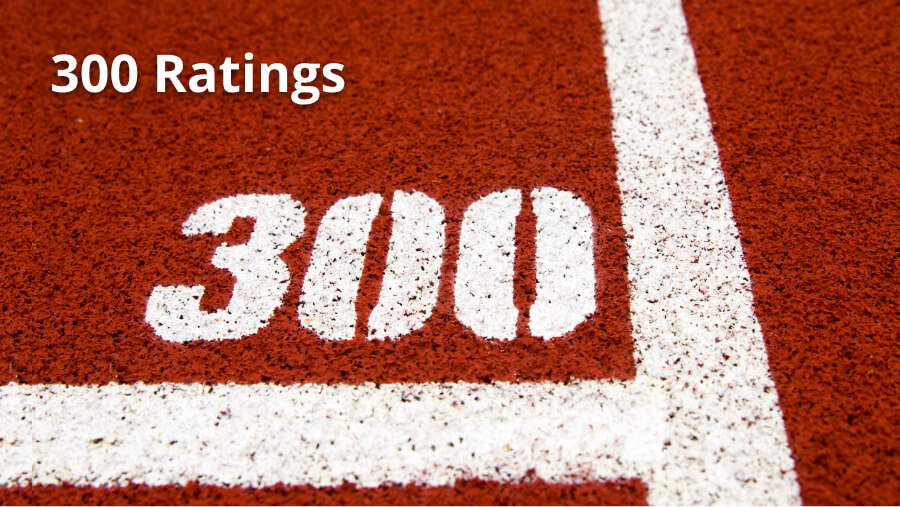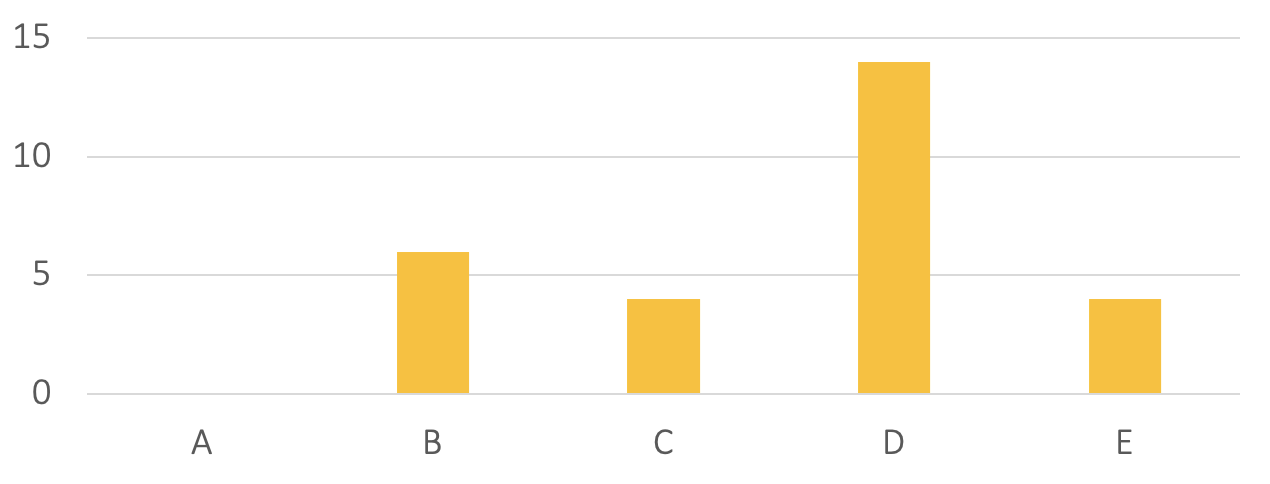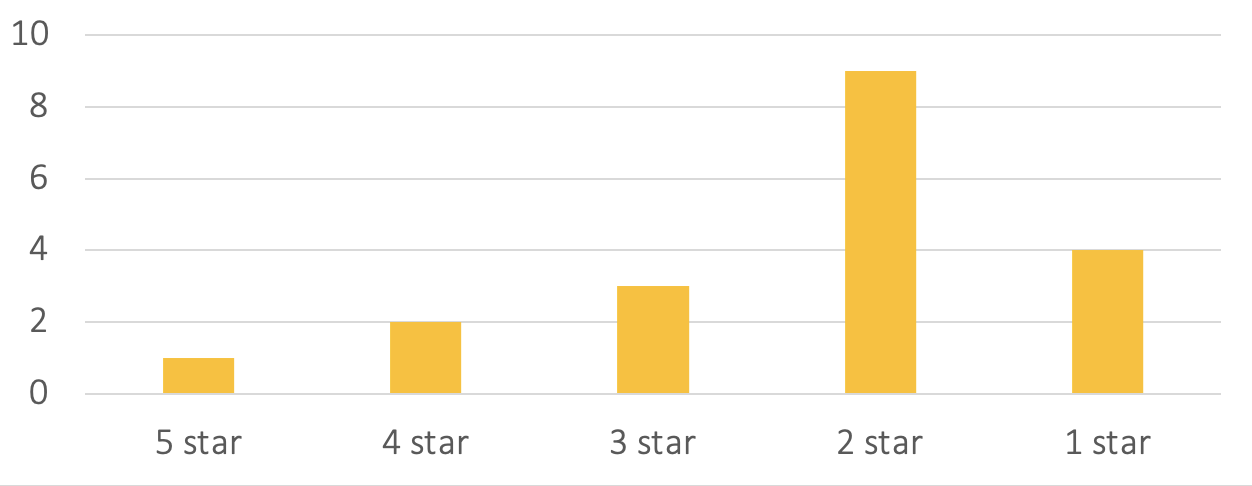
Today Calyx Global hit another milestone: Our 300th project rating. With every milestone we hit, we try to share some of the things we are learning. We have done this as we hit 170 and 200 ratings, and now offer some lessons as we reach 300 projects rated.
Stay tuned by following us on LinkedIn and signing up for our Newsletter to get notified when such information is published.
Calyx will continue to focus on areas where the market is actively transacting credits. But, in addition to this, last year, we also started to focus on helping our customers find high GHG integrity credits – that means finding and focusing on under-appreciated credit types, such as waste and industrial gas destruction. These may not be particularly charismatic, but are project types that are a good fit for offsetting. Credits with lower GHG integrity, but high SDG benefits, may still be useful as climate “contributions”.
That means, as you look at our distribution of ratings, the increasing number of highly rated projects does not mean we are being less stringent. Rather, we are purposefully looking for better credits, not going after market share alone.
Expect to see more of these credit types in our system in the coming months as we expand on such underappreciated (and often underpriced) credit types. As we also publish information about how the Calyx GHG integrity framework is applied and about more highly rated credits, we expect the supply to grow.
We believe this is the role of ratings agencies (including others beyond Calyx Global), organizations such as CCQI, academic institutions, the ICVCM and others – to move the market to higher quality, through various levers.
As an example, much has been written recently about cookstove projects. This is a good example where we see high variability in quality. CCQI and others have rightfully pointed out key issues either in cookstove methodologies or how projects apply them. That means doing the minimum required by a methodology can result in low quality. In particular, we agree with the criticism that cookstoves often overcredit (i.e. claim more emission reductions than are justified). But there are also some projects that score relatively better than others in our system.
In the coming months, we will provide information about how we rate such projects and why some projects perform better than others.
Figure: Calyx Global’s GHG ratings for 29 improved cookstove projects
Note: Y-axis is the # of projects per rating

We also find that cookstove projects can deliver positive SDG benefits. Around two-thirds of Calyx rated projects have SDG certification – it is one of the most highly rated project types for SDG contributions. Cookstoves projects’ contributions are typically framed under SDG 1 (No Poverty), SDG 3 (Good Health and Well Being), SDG 7 (Affordable and Clean Energy) and SDG 8 (Decent Work and Economic Growth).
Figure: Calyx Global’s SDG ratings for 19 improved cookstove projects
Note: Y-axis is the # of projects per rating

Stay tuned by signing up for our Newsletter and following us on LinkedIn.
#1 - We need to be more transparent
This is an honest self-criticism. We realize that our ratings don’t only impact our customers, but also project developers and their stakeholders. Our approaches to assess carbon credits need to be transparent and, to this end, we will be publishing throughout the year information on our ratings – how we are assessing the GHG integrity and SDG impact of carbon projects, as well as guidance on how projects can achieve success within our system.Stay tuned by following us on LinkedIn and signing up for our Newsletter to get notified when such information is published.
#2 - High quality isn’t easy to find, but we’re optimistic about future supply
Many people ask us how Calyx Global chooses projects to rate. We started by focusing on market share (i.e. projects representing large volumes in the market). However, we quickly realized this approach does not lead to finding many high quality credits – as there is an inverse relationship between projects that issue large volumes of credits and high GHG integrity. This does not mean all such projects are lower quality – but that one needs to really find, so to say, the needles in the haystack.Calyx will continue to focus on areas where the market is actively transacting credits. But, in addition to this, last year, we also started to focus on helping our customers find high GHG integrity credits – that means finding and focusing on under-appreciated credit types, such as waste and industrial gas destruction. These may not be particularly charismatic, but are project types that are a good fit for offsetting. Credits with lower GHG integrity, but high SDG benefits, may still be useful as climate “contributions”.
That means, as you look at our distribution of ratings, the increasing number of highly rated projects does not mean we are being less stringent. Rather, we are purposefully looking for better credits, not going after market share alone.
Expect to see more of these credit types in our system in the coming months as we expand on such underappreciated (and often underpriced) credit types. As we also publish information about how the Calyx GHG integrity framework is applied and about more highly rated credits, we expect the supply to grow.
We believe this is the role of ratings agencies (including others beyond Calyx Global), organizations such as CCQI, academic institutions, the ICVCM and others – to move the market to higher quality, through various levers.
#3 - High variability still exists within project types
Although we maintain confidence in the ongoing improvement of the voluntary carbon market, we continue to observe significant variability in credit quality. We believe Calyx Ratings can help: allowing credit buyers, traders, investors and others to purchase higher quality credits.As an example, much has been written recently about cookstove projects. This is a good example where we see high variability in quality. CCQI and others have rightfully pointed out key issues either in cookstove methodologies or how projects apply them. That means doing the minimum required by a methodology can result in low quality. In particular, we agree with the criticism that cookstoves often overcredit (i.e. claim more emission reductions than are justified). But there are also some projects that score relatively better than others in our system.
In the coming months, we will provide information about how we rate such projects and why some projects perform better than others.
Figure: Calyx Global’s GHG ratings for 29 improved cookstove projects
Note: Y-axis is the # of projects per rating

We also find that cookstove projects can deliver positive SDG benefits. Around two-thirds of Calyx rated projects have SDG certification – it is one of the most highly rated project types for SDG contributions. Cookstoves projects’ contributions are typically framed under SDG 1 (No Poverty), SDG 3 (Good Health and Well Being), SDG 7 (Affordable and Clean Energy) and SDG 8 (Decent Work and Economic Growth).
Figure: Calyx Global’s SDG ratings for 19 improved cookstove projects
Note: Y-axis is the # of projects per rating

Stay tuned by signing up for our Newsletter and following us on LinkedIn.
Get the latest delivered to your inbox
Sign up to our newsletter for the Calyx News and Insights updates.
